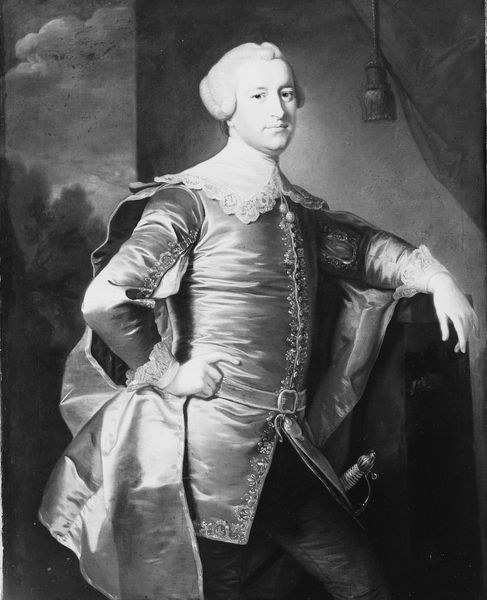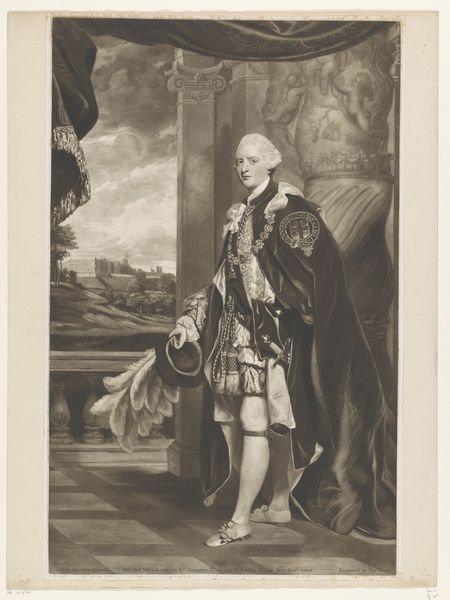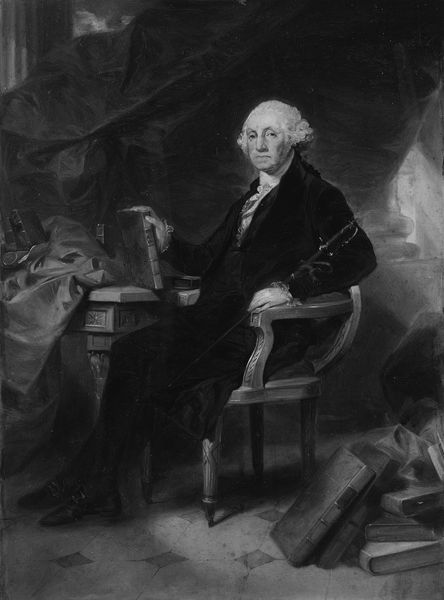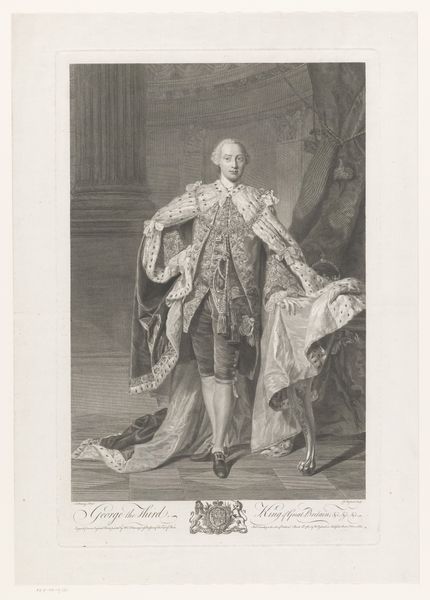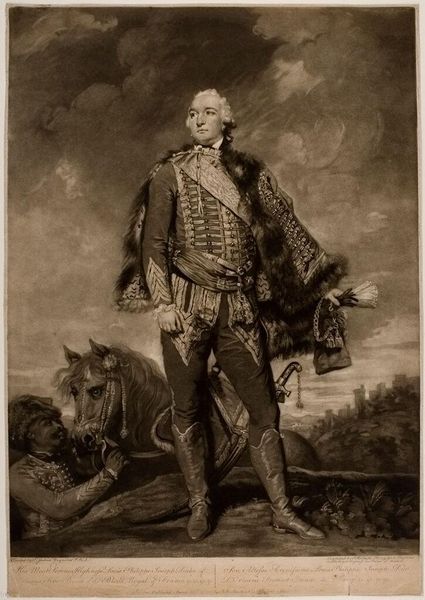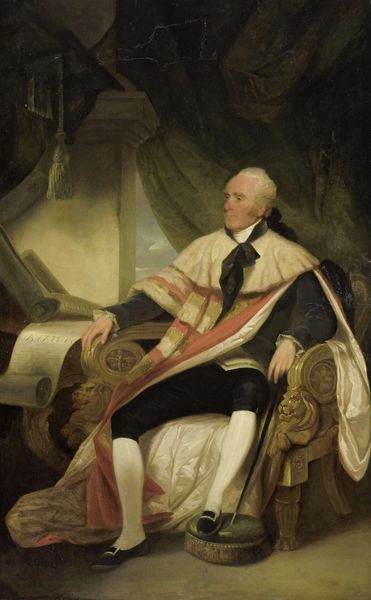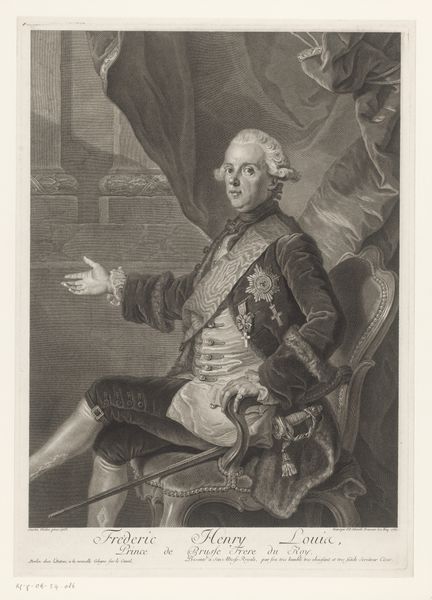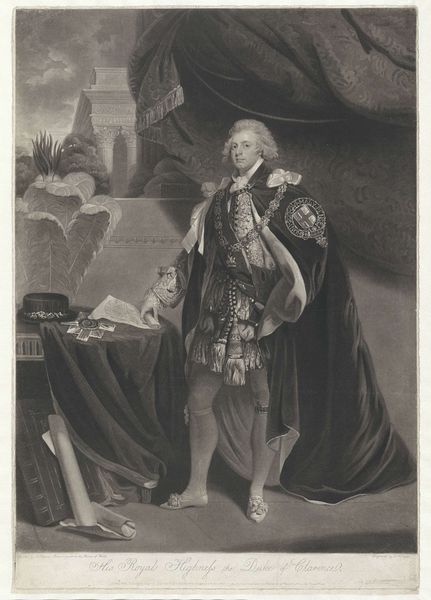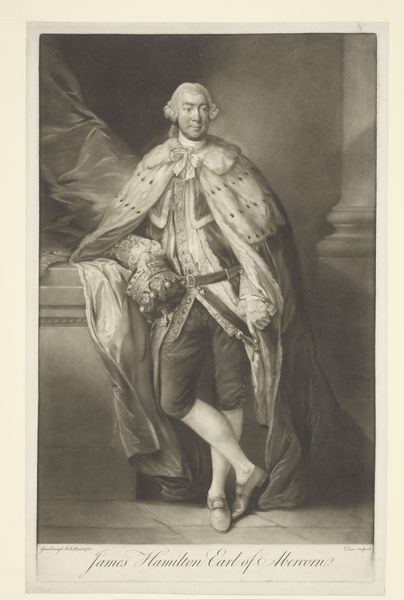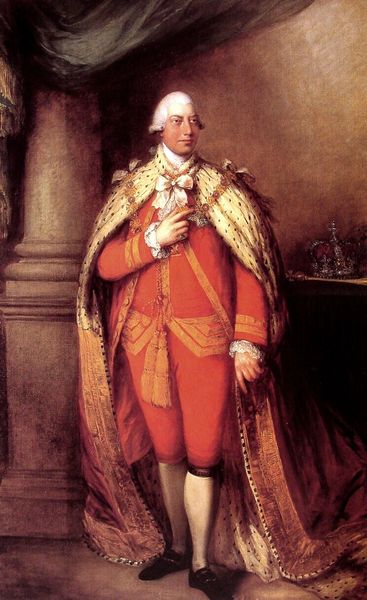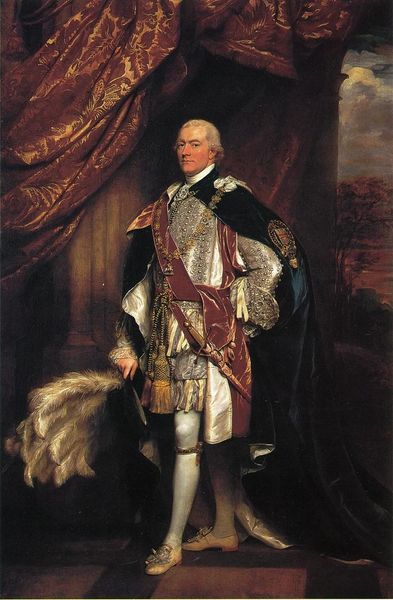
Dimensions: 238 cm (height) x 145 cm (width) (Netto)
This portrait of King George III of England was made by an anonymous artist, though it likely would have been displayed in an institutional setting like a royal court. The image presents a visual code of power, using symbols such as the crown and royal garments to reinforce the King’s authority. This kind of portraiture, common in 18th century Europe, served a specific social function. As the British monarchy faced increasing political challenges, the images presented the figure of the King as both majestic and divinely sanctioned. But these portraits were also open to critique. For example, what does it mean to see the King depicted with such extravagance at a time of widespread poverty and social unrest? What is the politics of imagery? As art historians we ask these questions and, through studying historical records, contemporary accounts, and other visual materials, we attempt to better understand the role of art in shaping political and social identities.
Comments
No comments
Be the first to comment and join the conversation on the ultimate creative platform.
